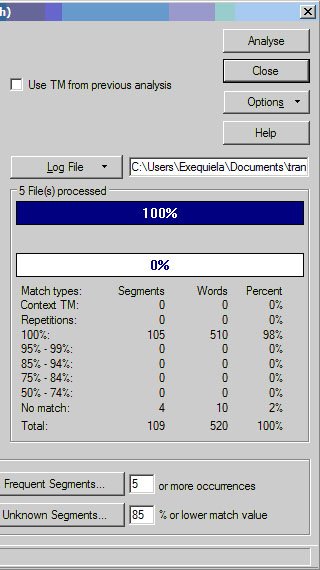Continuing with the topic of Trados, or translation memory software, the ‘100% matches’ moniker warrants a closer look. The term can be both deceptive and misapplied, for reasons including the true accuracy of the matches and the way they affect translation rates, respectively. The term applies to any segment of source text that is an exact match with an already-translated segment stored in the software’s database. Different memory systems can achieve the 100% match to different degrees, but even the most effective ones can still suffer misapplication.
Take, for instance, the source text segment “cozy and modern.” If the software’s first encounter with this phrase involves the description of an apartment, it would be stored in the memory as “acogedor, moderno.” The problem arises when this is applied to the same phrase in reference to, say, a kitchen or some other feminine noun. The source language would appear exactly the same, as English does not use gender, but the exact match application would obviously be incorrect in Spanish.
And this is only one example. There are other instances in which software programs cannot necessarily account for the intricacies of language in their “exact” translations. Other examples include verbs that change depending on plural/singular or wider context differences that the software may not pick up on in the words immediately surrounding the segment. All together, these imperfect applications complicate the way agencies incorporate the ‘100% match’ moniker into their rates.
Since exact matches are technically translated by the software and not the human translator, some agencies will not pay for these segments. But the examples detailed above illustrate how even these segments must be proofread for accuracy and are far from fool-proof despite being ‘100% matches’. Even when agencies choose not to pay for these, they should at least have someone on hand to go through and proofread exact match segments. And if it’s the client who doesn’t want to pay for these translated segments, a brief explanation about the software’s imperfect output might be enough to justify a separate editing fee at a minimum.








